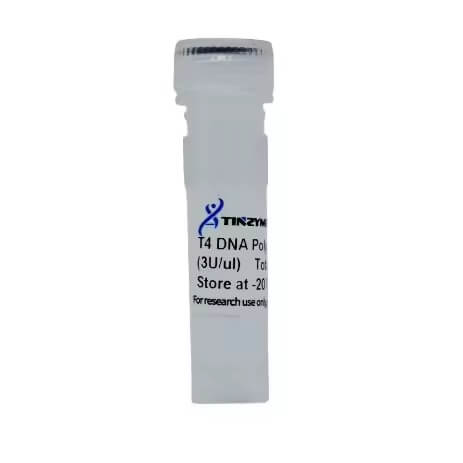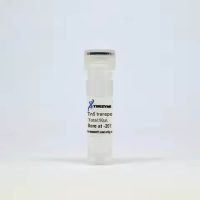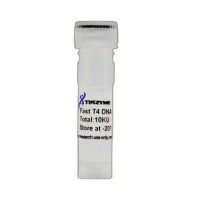
T4 Polynucleotide Kinase
2025-01-13
T4 DNA Polymerase
2025-01-13T4 Polynucleotide Kinase, T4 PNK
Product Number: T4K01
Shipping and Storage
-20°C.
Components
| Components | Volume |
| T4 PNK(10U/μl) | 20μl |
| 10mM ATP | 50μl |
| 10×T4 PNK Reaction Buffer | 1ml |
Description
T4 PNK is a polynucleotide 5 ‘hydroxy kinase that catalyzes ATP γ- Transfer and exchange of phosphonic acid to double stranded/single stranded DNA or RNA, as well as single nucleotides with 3 ‘phosphate groups at 5’ – hydroxyl groups: 5 ‘- OH+NTP5’ ↔ P+NDP; This enzyme also has 3 ‘- phosphatase activity, which hydrolyzes the 3’ – phosphate group from the 3 ‘- phosphate end of the oligonucleotide, deoxygenated 3’ – monophosphate nucleoside, and deoxygenated 3 ‘- diphosphate nucleoside.
Application
- Phosphorylation of the 5 ‘end of primers or PCR products for linkage reactions.
- Phosphorylation of the 5 ‘end of the synthesized DNA connector (Linker) for connection reaction.
- Labeling of the 5 ‘end of DNA and RNA, used as an oligonucleotide probe.
Unit Definition
The amount of enzyme required to mix 1 nmol of [γ-32P]ATP with acid insoluble precipitate is defined as 1 active unit, using Micrococcal Nuclease treated calf thymus DNA as substrate, at 37 ℃, pH 7.6, within 30 minutes.
Quality control
After multiple column purification, only a clear and single target band was visible in SDS-PAGE gel detection. The PCR method detected no residual Escherichia coli DNA, and no contamination of nucleic acid endonucleases, exonucleases, phosphatases, and RNA enzyme activities.




